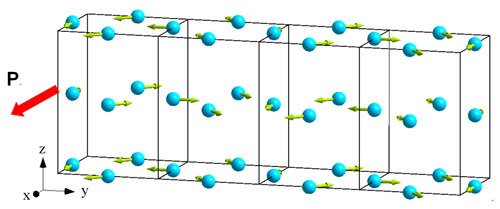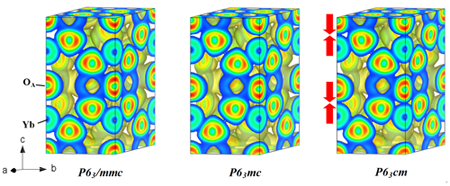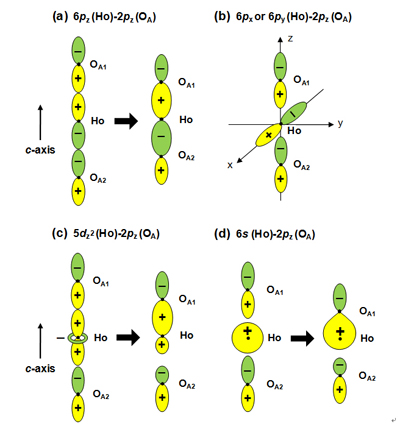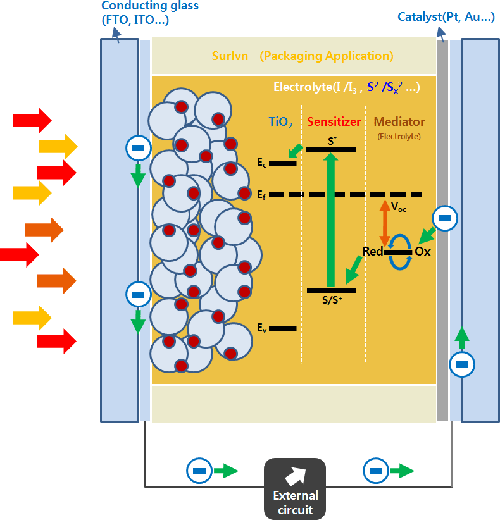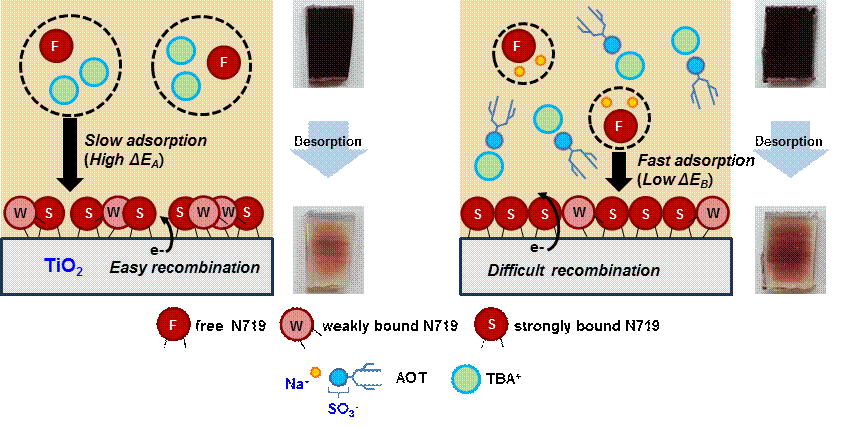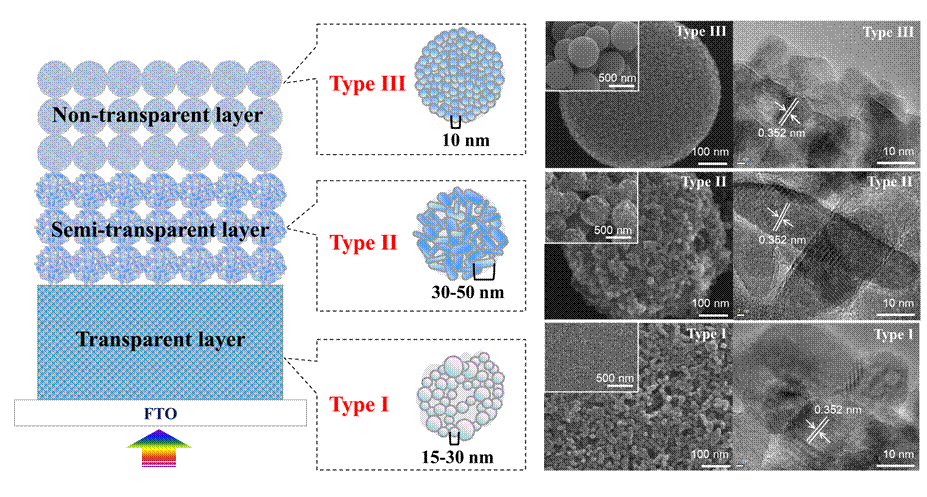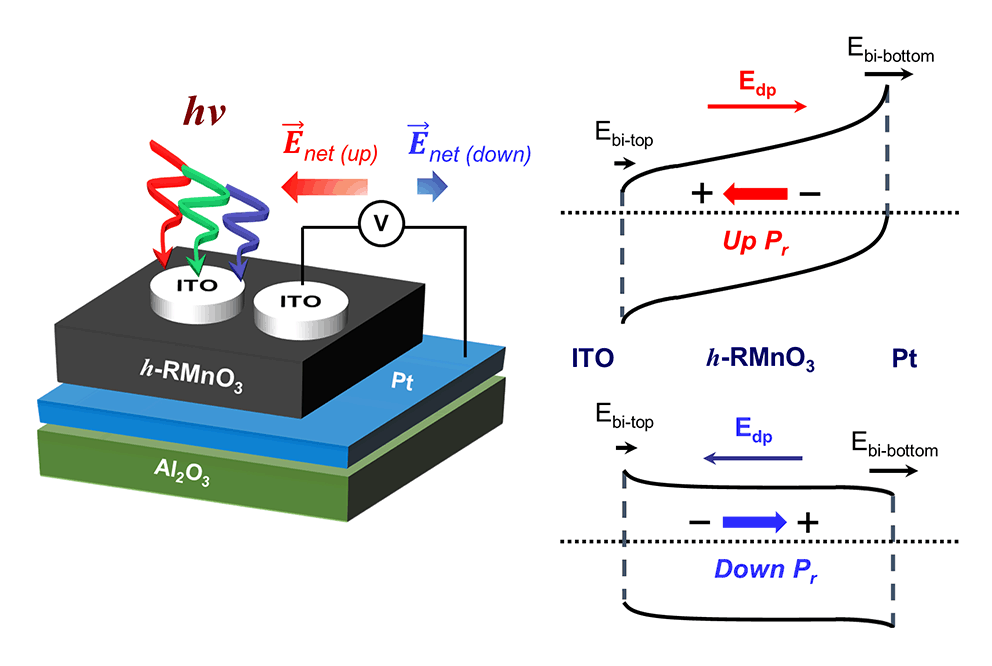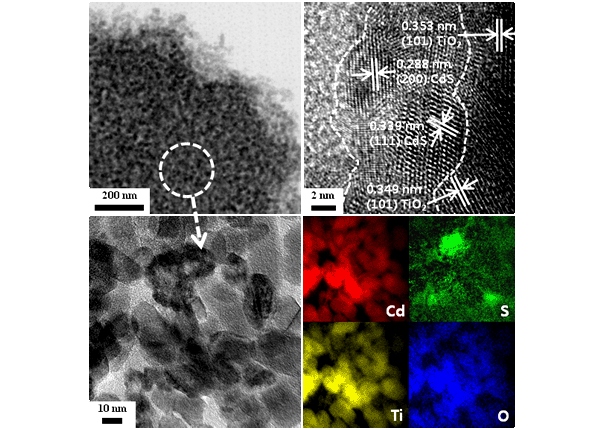Hyun Myung Jang's Lab. of Materials Physics
POSTECH
Department of Materials Science and Engineering
|
Research * Applied Quantum and Statistical Mechanics * Functional Nanostructures and Devices * Quantum-Dot-Sensitized and Dye-Sensitized Solar Cells
* Applied Quantum and Statistical Mechanics
* Functional Nanostructures and Devices
|
* Dye-Sensitized and Quantum-Dot-Sensitized Solar Cells
|
◇ Dye-sensitized solar cells (DSCs) With increasing demand of sustainable renewable energies, dye-sensitized solar cells (DSCs) have been considered to be a promising alternative to relatively expensive conventional silicon-based solar cells. DSC is made of n-type wide-band semiconductor (mostly TiO2 and ZnO), which is sensitized with dye that excites an electron by absorbing photons to produce photocurrent. It is also called a ‘kinetic cell’ because there is no charge separation caused by built-in potential, but difference of rate constants between electron excitation, diffusion and recombination gives rise to power generation. Since the announcement of a sensitized electrochemical photovoltaic device by O’Regan and Grätzel in 1990 with 7 % of overall efficiency, the development of DSC has continued to achieve certified efficiency up to 11% which is half level of silicon single crystal solar cells. If its efficiency is reached close to theoretically predicted value, its cost competitiveness will be strikingly improved, compared to silicon-based photovoltaics.
◇ Operation principle Typical structure of DSC is as follows. It consists of conducting glass substrate (FTO), wide - band gap semiconductor (TiO2), sensitizer, electrolyte including redox mediator, and Pt counter electrode.
DSC is fabricated on conducting glass, fluorine-doped SnO2 (FTO) so that irradiated light can pass through the substrate. Anatase TiO2 nanoparticles are generally deposited on the FTO substrate as form of colloidal suspensions, then annealed at 500 °C to ensure inter-particle connectivity. TiO2 nanoparticles are 10~20 nm in diameter, and prepared as a mesoporous film, giving sufficient surface area to adsorb enough amount of sensitizer. Typical nano-structured TiO2 film provides 1000 times larger surface area than flat TiO2 film.
◇ Research field ● Dye-sensitization
The electrolyte of the DSC primarily uses triiodide/iodide (I3-/I-) as a redox couple. Therefore, it is essential to understand the regeneration and recombination kinetics of the I3-/I- redox couples in the device. In this context, controlling the total and local concentrations of the I3-/I- redox couples is an important parameter that can influence the DSC performance. Here, we propose that the introduction of a sodium bis (2-ethylhexyl) sulfosuccinate (AOT)/water system to the I3-/I- electrolyte enables the control of the concentration of the redox couples, which consequently achieves a high power conversion efficiency of ~11% for ~1000 h (under one sun illumination) owing to the enhanced dye-regeneration efficiency and the reduced recombination rate. This novel concept assists in the comprehension of the regeneration and recombination kinetics and develops highly efficient DSCs. [Adv. Energy Mater., 3, 1344-1350 (2013)]
Ion exchange is a versatile method for efficient dye-adsorption. Herein, we show that the ion exchange using aerosol OT (AOT)offers twice as fast as known methods in the dye-loading process. Moreover, it suppresses the dye-agglomeration that may cause insufficient dye-coverage on the photoelectrode surface. Consequently, this bi-function of fast dye-loading and higher dye-coverage significantly improves the power conversion efficiency of dye-sensitized solar cells. [Chem. Commun., 49, 6671-6673 (2013)]
In the structural viewpoint, multi-layered DSCs have been reported to show superior efficiencies to single- and bi-layered devices, because of the optimized light trapping within the photoelectrodes. However, their structural complexity and restricted dye-loading still remains a challenge, which may limit wider applications to the DSCs. To deal with this problem, we have implemented optically-tunable TiO2 hierarchical nanomaterials with three distinct configurations. Since these nanostructures are formed by aggregation of mesoporous TiO2 particles, they turn out to have sufficient surface area of > 70 m2∙g-1. Then, the hierarchically-structured multi-layer was demonstrated by simple layering of three TiO2 hierarchical nanomaterials. As a result, effective light confinement was achieved over a wide wavelength range without compromising the dye-loading issue. [J. Mater. Chem. A, DOI: 10.1002/aenm.201300275 (2013)]
●Quantum-dot sensitization Instead of using a dye, the sensitization of a photoelectrodes can be achieved through modification of the oxide surface with a narrow band-gap semiconductor quantum-dot (QD). Quantum-dot-sensitized solar cells (QDSCs) recently have attracted a great deal of attention owing to their advantages over DSCs. The advantages include (i) higher molar extinction coefficient of QDs than ruthenium complexes, (ii) tunable energy gaps, and (iii) multiple exciton generation which may potentially lead to a theoretical maximum efficiency with cheap manufacturing cost over that of DSCs.
The sea urchin TiO2 (SU TiO2) particles composed of radially aligned rutile TiO2 nanowires are successfully synthesized through the simple solvothermal process. SU TiO2 was incorporated into the TiO2 nanoparticle (NP) network to construct the SU-NP composite film, and applied to the CdS/CdSe/ZnS quantum-dot-sensitized solar cells (QDSSCs). A conversion efficiency of 4.2% was achieved with a short-circuit photocurrent density of 18.2 mA cm2 and an open-circuit voltage of 531 mV, which corresponds to ~20% improvement as compared with the values obtained from the reference cell made of the NP film. We attribute this extraordinary result to the light scattering effect and efficient charge collection. [Phys. Chem. Chem. Phys., 14, 4620-4625 (2012)]
As a modification version of chemical bath deposition, SILAR (successive ionic layer adsorption and reaction) technique was used to deposit CdS QDs on tertiary-structured mesoporous spherical TiO2 films (mean diameter of 1190 ± 60-nm, which consists of ~100-nm-sized secondary particles formed by clustering of 15-nm-sized primary nanocrystallites). A conversion efficiency of 1.9 % was achieved by the MS TiO2 device, noticeably higher than 1.2 % for conventional QDSCs made of nanocrystalline TiO2. [Electrochim. Acta, 56, 7371-7376 (2011)]
|
Department of Materials Science and Engineering, Pohang University of Science and Technology,
Pohang, 790-784, Republic of Korea. TEL : 82-54-279-2805 / FAX : 82-54-279-5223
Copyrightⓒ Lab. of Multiferroic and Photovoltaic Nanostructures. All rights reserved.
